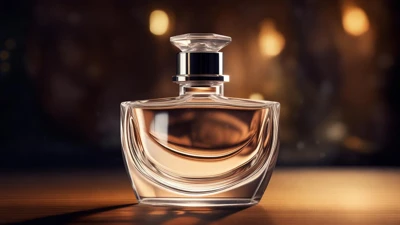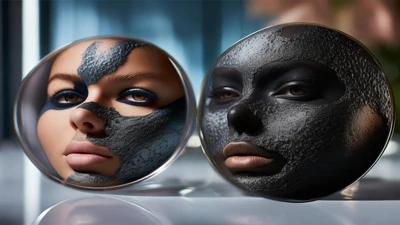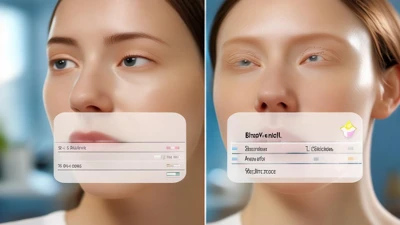
Are chemical sunscreens better at protecting skin than physical sunscreens?
1. The Basics of Sunscreen Technology
The two main kinds of sunscreens are chemical (organic) and physical (mineral). Chemical sunscreens work by using active compounds like avobenzone, oxybenzone, or octocrylene. These compounds take in UV rays and turn them into heat. Physical sunscreens, usually made with zinc oxide or titanium dioxide, rest on the skin's surface and reflect UV rays. People question their efficacy due to UV spectrum coverage, photostability, skin compatibility, and potential harm to the environment. The essay examines both technologies scientifically, dermatologically, environmentally, and with a focus on user needs to identify the one with superior protection.
2. A Scientific Comparison of UV Protection Mechanisms
2.1 UV Spectrum Coverage
Chemical sunscreens are formulated to guard against both UVA and UVB exposure. Avobenzone demonstrates effectiveness in blocking UVA1 rays spanning 340–400 nm. The penetration of these rays into the skin is deep, and they are closely linked to photoaging processes. However, many chemical filters need to be combined to provide broad-spectrum protection. In 2019, researchers found that using blends of multiple chemical filters was beneficial, as reported in the Journal of the American Academy of Dermatology. Avobenzone and octocrylene are key ingredients in SPF 50+ sunscreens that ensure balanced UVA and UVB defense.
Physical sunscreens work well to shield against the entire UV spectrum. Uncoated zinc oxide is particularly effective for UVA2 and blue light protection. According to a 2021 Dermatologic Surgery review, zinc oxide is capable of reflecting 99% of UVA and UVB rays if its concentration exceeds 20%. Higher concentrations of titanium dioxide are necessary because it provides limited defense against UVA1.
2.2 The Ability to Withstand Light and Maintain Performance Over Time
Chemical sunscreens lose effectiveness due to photodegradation. In the presence of UV radiation, avobenzone degrades rapidly unless paired with stabilizers such as octocrylene. Research published in 2020 revealed that stabilized avobenzone stayed at 85% efficacy after two hours. Meanwhile, unstabilized avobenzone decreased to 30%.
Physical sunscreens are naturally photostable. Zinc oxide can last up to 80 minutes in water-resistant formulations, based on a 2018 trial from the Journal of Cosmetic Dermatology. Their efficacy reduces when they are not reapplied following sweating or using a towel.
3. Skin-Friendly Perspectives in Dermatology
3.1 Sensitivity and Irritation
Many experts recommend physical sunscreens for sensitive skin users. Zinc oxide was tolerated by 78% of children with eczema, as reported in a 2022 Pediatric Dermatology study. Meanwhile, only 42% of the same group handled chemical sunscreens without adverse effects. Some users, about 5 to 10 percent, might experience mild irritation from titanium dioxide due to its particle size and formulation pH.
Oxybenzone and similar chemical filters are known to be linked to contact dermatitis. According to the American Contact Dermatitis Society, oxybenzone is a leading allergen. In patch tests, 15% of patients reacted negatively. Per a 2023 review in the British Journal of Dermatology, irritation rates for newer filters such as bemotrizinol are as low as 2-3%.
3.2 Systemic Absorption and Potential Health Risks
A pivotal 2019 FDA study published in JAMA found oxybenzone in the urine of 96% of participants after just one application, sparking concerns about potential endocrine disruption. Although no causal link to human disease has been proven, the European Commission limits oxybenzone concentrations to 6%.
Physical filters are mostly non-absorbent. An FDA study from 2020 verified that zinc oxide nanoparticles under 100 nm exhibit very low systemic absorption, even when used at a concentration of 25%. Despite advancements, concerns remain about nanoparticle inhalation risks in sprays.
4. How Coral Reefs and Ecosystems Are Affected by Environmental Changes
4.1 Chemical Sunscreen Bans
Hawaii's 2018 prohibition on oxybenzone and octinoxate, which are connected to coral bleaching and DNA harm in young coral, underscores environmental worries. Researchers estimated in a 2021 Science article that 14,000 tons of sunscreen enter the oceans each year. They also discovered that oxybenzone disrupts reproduction in 15% of coral types.
4.2 Mineral Sunscreen Alternatives
Physical sunscreens are advertised as "reef-safe." Despite this, their ecological footprint is nuanced. In a 2022 Environmental Science & Technology review, it was noted that non-nano zinc oxide sized greater than 100 nm offers negligible danger to marine life. Titanium dioxide nanoparticles might build up in sediment, impacting aquatic microorganisms.
5. User Experience includes Texture, Aesthetics, and Adherence to Rules
5.1 Cosmetic Elegance
Chemical sunscreens provide a light feeling. They also avoid a greasy residue. According to a 2023 survey by Cosmetics & Toiletries, 68% of respondents showed a preference for chemical-based makeup formulations.
In the past, physical sunscreens often caused a white cast. This problem has been mitigated by advancements in nanoparticle technology. Dermatologists frequently suggest tinted zinc oxide products. EltaMD UV Clear Broad-Spectrum SPF 46 is one example commonly recommended for darker skin tones.
5.2 Consider water resistance when planning for reapplication
While chemical sunscreens boast 80-minute water resistance, their ability to protect declines when the skin sweats. In a 2021 Archives of Dermatology study, researchers found that chemical sunscreen users were more likely to get sunburned after swimming. Specifically, 30% did versus 18% of physical sunscreen users.
6. Understanding Regulations. Understanding Culture
6.1 Global Standards
According to EU regulations, UVA protection should be no less than one-third of the SPF level, making chemical blends more common. The USA FDA's delayed changes to its monograph have stifled innovation. As a result, only two physical and 16 chemical filters have received approval.
6.2 Consumer Trends
Between 2019 and 2023, the sales of mineral sunscreens grew by 22%. This growth was fueled by the clean beauty movement, according to Statista. According to a 2024 Mintel report, 45% of consumers prioritize non-greasy textures. They care less about eco-claims.
7. Narratives from My Life and Ethical Implications
Having rosacea means oxybenzone-based sunscreens often sting. That's why I started using zinc oxide. I tried a mineral SPF 50+ stick on my 2022 beach trip. It worked well in the water, but I kept reapplying it throughout the day. Conversely, a person training for a marathon finds chemical sunscreens to be perfect. The sunscreens resist sweat and offer an undetectable texture.
I question whether my comfort is worth the environmental cost it entails. I avoid using oxybenzone, but I also understand that producing mineral sunscreens involves intensive mining for zinc.
8. Context-Dependent Superiority
When it comes to photostability and broad-spectrum coverage, chemical sunscreens outperform physical ones. They are also more comfortable and ideal for daily wear during activities. For those with delicate skin, physical sunscreens work best. They're also ideal for children and sea creatures. Different people may find different options 'best' based on their needs and values. Innovations like hybrid formulations will likely emerge in the future. Differences in expectations for sunscreen products could soon be resolved by offerings such as La Roche-Posay Anthelios Hybrid SPF 50+. It provides a balance between strength, reliability, and green practices.














